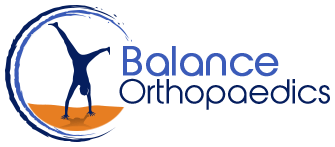Shoulder Treatment
Arthroscopic Technique
Rotator Cuff
Subacromial Decompression
A subacromial decompression is a surgery performed for patients with shoulder impingement. Impingement is one of the most common causes of pain in the shoulder. It results from pressure on the rotator cuff from part of the shoulder blade (scapula) as the arm is raised to the shoulder height.
Rotator Cuff Repair
Rotator cuff is the group of tendons in the shoulder joint providing support and enabling wider range of motion. Major injury to these tendons may result in tear of these tendons and the condition is called as rotator cuff tear.
Revision Rotator Cuff Repair
The rotator cuff consists of muscles and tendons that connect the arm to the shoulder blade. Tears in this network of muscles and tendons are usually repaired by suturing the tendon back to its original position. However, tears can occur even after surgery. In such cases a revision rotator cuff repair may be performed.
Superior Capsule Reconstruction
The shoulder joint is stabilised by the joint capsule and rotator cuff. Tears to the rotator cuff can cause severe pain and impairment. When defects in the underlying upper joint capsule add to the instability caused by rotator cuff tears, it cannot be repaired with conventional treatments.
Biceps Tenodesis
The biceps is a large skeletal muscle of the upper arm that flexes the elbow to lift the forearm, and is also responsible for some shoulder movements. It is connected by tendons to bones in the shoulder and elbow on either side.
Instability
Anterior Stabilisation
The shoulder consists of 3 bones (humerus, scapula and clavicle) which together form a ball and socket joint and helps in the flexible movement of the shoulder. The shoulder is supported and stabilised by strong muscles, ligaments and a rim of cartilage tissue called the labrum.
Posterior Stabilisation
The shoulder consists of 3 bones (humerus, scapula and clavicle), which together form a ball and socket joint and help in the flexible movement of the shoulder. The shoulder is supported and stabilised by strong muscles, ligaments and a rim of cartilage tissue called the labrum.
SLAP Repair
The shoulder joint is a ball and socket joint made up of the upper arm bone (humerus), the shoulder blade (scapula) and the collarbone (clavicle). The head of the upper arm bone fits into the socket of the shoulder joint known as the glenoid cavity.
Open Technique
Instability
Latarjet
The shoulder joint provides a wide range of movement to the upper extremity but overuse or trauma can cause instability to the joint. The Latarjet procedure is a surgical procedure performed to treat shoulder instability by relocating a piece of bone with an attached tendon to the shoulder joint.
Osteoarthritis
Hemiarthroplasty
The hip joint is one of the body's largest weight-bearing joints and is the point where the thigh bone (femur) and the pelvis (acetabulum) unite. It is a ball and socket joint in which the head of the femur is the ball and the pelvic acetabulum forms the socket.
Total Shoulder Replacement
The shoulder is a highly movable body joint that allows various movements of the arm. It is a ball and socket joint, where the head of the humerus (upper arm bone) articulates with the socket of the scapula (shoulder blade) called the glenoid.
Reverse Total Shoulder Replacement
Reverse total shoulder replacement, is an advanced surgical technique specifically designed for rotator cuff tear arthropathy, a condition where the patient suffers from both shoulder arthritis and a rotator cuff tear.
